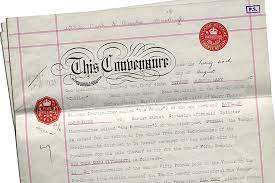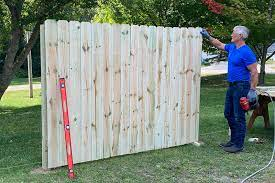Deed restrictions, or restrictive covenants, are binding conditions that a seller has written into a property’s deeds to restrict changes a homeowner can make to their property or to the land it is built on. They cover a vast range of issues and allow landowners to retain some control over how the land is used.
Obstructing a neighbour’s view
Property owners often have mutual agreements in place not to build anything that will obstruct their existing view. These are often written into the deeds and state that the view must remain exactly the same as when the agreement was put in place and are particularly common in holiday destinations, where the views are important. These deed restrictions will affect how high or wide a structure can be and may even specify where it can be situated. A reputable firm such as Parachute Law Ascot Solicitors will be able to advise you in any dispute surrounding view obstruction.

It is also important to be aware of the “right to light”, which is an easement giving landowners the right to receive light through defined apertures in buildings. More information about this can be found on the government website here:
Building adjacent structures
Deed restrictions often control or even forbid the building of structures such as sheds, garages and pools. There could be a restriction on the design, size and where they are located and some deeds may also specify the percentage of land that can be built on. If you are looking for a plot of land to build your dream house, you also need to bear in mind what additional structures you may require and whether they will be allowed. There have even been cases where children’s tree houses have had to be taken down.
Plans must be approved
Builders and developers often want to retain the authority to approve plans for additions or renovations, and so write this into the deeds. This can be in order to keep the buildings in the area uniform and will restrict the style of structures that are allowed. These deed restrictions can be extremely strict and may specify which building materials can be used and the architectural style. It is vital to get building plans approved before going ahead with the project, as failure to do so could mean paying damages or even an injunction forcing you to make changes to the house in order to conform. Ascot solicitors such as Parachute Law can help with any disputes relating to the approval of plans.
Building Fences
Some deed restrictions specify what type of fence is acceptable, these being the most widespread and strictest restrictions. The style of the fence is often limited and tall privacy fences may be prohibited as height restrictions are often included. If you build a fence that doesn’t meet the terms of the restrictive covenant, you could face a huge fine, so it is important to be informed of all the limitations in place.

Removing trees
Many locations have deed restrictions that prevent trees from being removed and there are many reasons for this. It could be to preserve an environmentally friendly atmosphere or ensure the tree-lined look is not compromised. There may be a complete ban on any tree removal, or a limitation on the percentage of trees that can be removed.

